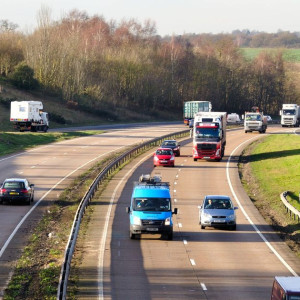Driving instructor explains mistake people make with dual carriageways


A driving instructor has revealed a widespread error many motorists make[1] regarding dual carriageways - and it stems from confusion about how they differ from other road types. With hundreds of Highway Code regulations to remember and follow, it's perfectly understandable why some drivers might become muddled or make errors. Richard Fanders, from Conquer Driving, regularly posts educational content on social media platforms to assist both learner drivers and qualified motorists in understanding road rules and maintaining safety.
In a recent YouTube video, the expert highlighted a frequent misconception many people hold about dual carriageways. The instructor noted it's "common" for him to encounter the belief that dual carriageways and motorways differ simply based on lane numbers, reports the Mirror[2]. Fanders explained that most individuals believe dual carriageways feature two lanes whilst motorways contain three or more - however, this assumption is incorrect.
Fanders clarified: "A motorway is a road with motorway status - and how many lanes are in each carriageway does not determine whether or not that road gets motorway status." He added: "'Dual' means two but 'carriageway' does not mean lane and I think that's where some people can get this wrong." What truly defines a dual carriageway in the UK is having a central reservation that divides two carriageways, with one designated for each direction of travel.
The number of lanes doesn't necessarily determine its status, and it can have two or more lanes in each direction. Fanders then provided illustrative examples of roads, stating: "In Great Britain, if they are travelling in opposing directions they will be passing on the left. "This road is a dual carriageway.
We have one carriageway on the left travelling in one direction and another carriageway on the right travelling in the other direction and each carriageway is separated by a central reservation. "This can be a barrier, a kerb or just a piece of grass. This is what makes it two carriageways or a dual carriageway - how many lanes are in each carriageway is not relevant.
"There can be one lane in each carriageway, or there can be many lanes in each carriageway. There is no limit to how many lanes can be in each carriageway." Fanders then highlighted the key difference between dual carriageways and motorways, which lies in the level of access control and the types of vehicles allowed on the roads.
Dual carriageways permit a broader range of vehicles, including cyclists, slower vehicles and more, while motorways impose stricter regulations on the types of vehicles allowed. Motorways utilise blue signs, whereas dual carriageways typically employ green signage. In the comments section, fellow YouTube users shared their thoughts.
One person commented: "Useful stuff, thanks. I think I knew all the points raised, but I've been driving for many years now." Someone else said: "Thank you for clearing this up for people.
I was once on a single lane dual carriageway country road and got stuck behind someone who was only going 60mph when they should've been going at 70mph."
A third added: "Brilliant explanation.
Thank you."
References
- ^ widespread error many motorists make (www.cambridge-news.co.uk)
- ^ the Mirror (www.mirror.co.uk)